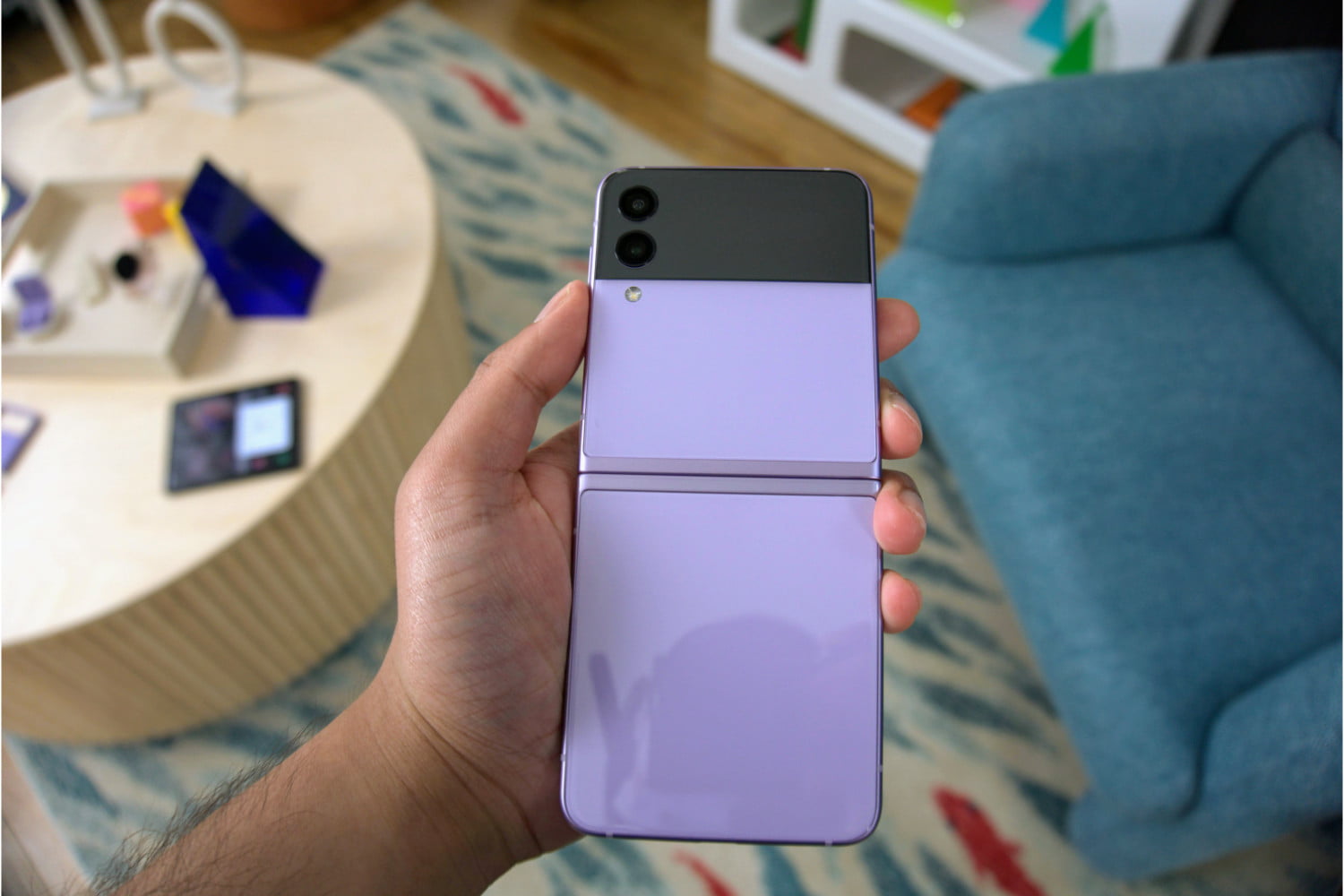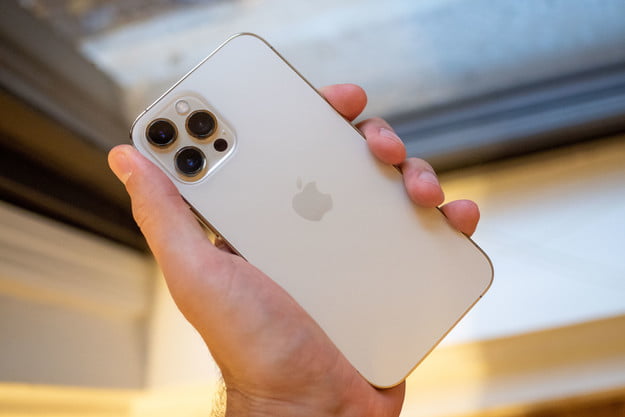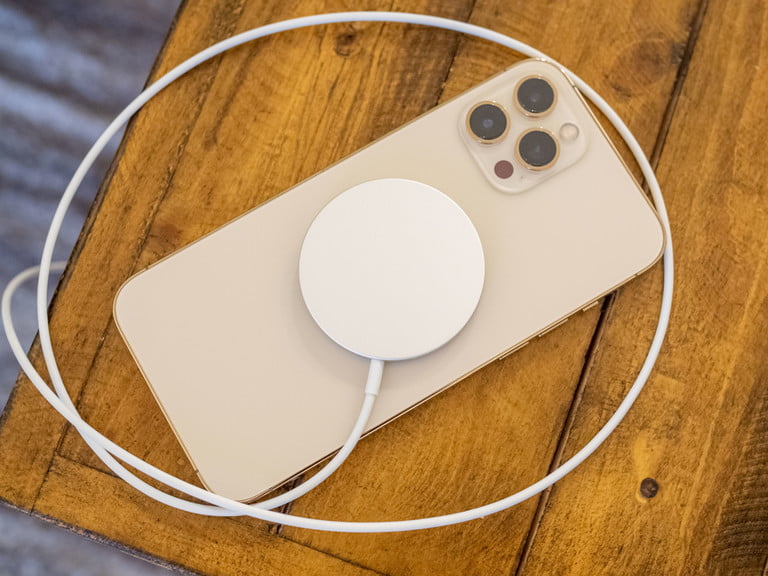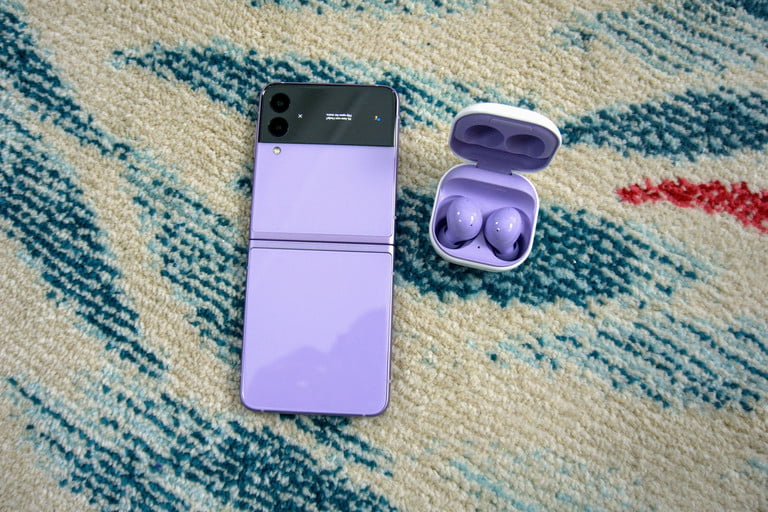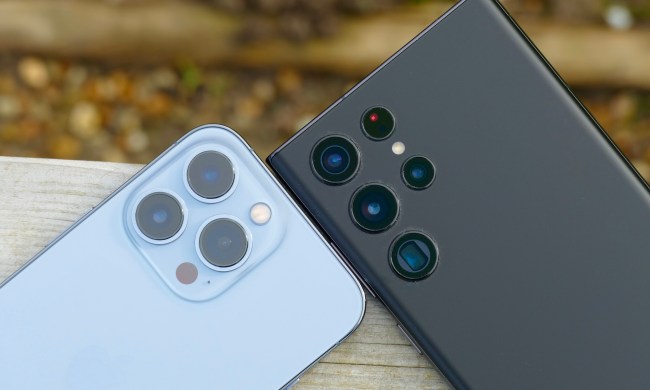With the recent launch of the Samsung Galaxy Z Flip 3, you might be wondering whether to invest in the latest foldable delight or pick up a new iPhone 12 Pro Max instead. True, the 6.7-inch Super Retina XDR OLED display, A14 chip, and matte glass back of the iPhone 12 Pro Max are appealing, but the foldability, dual screens, and 120Hz refresh rate of the Z Flip 3 are calling out to you too.
Comparing two phones can be hard work — but don’t worry, we’ve done it for you. We’ve compared the Samsung Galaxy Z Flip 3 and the iPhone 12 Pro Max across six core categories, from display to special features, to help you decide which one is worthy of your cash.
You can also check out our full Galaxy Z Flip 3 review to find out more about Samsung’s latest foldable phone.
Specs
| Samsung Galaxy Z Flip 3 | Apple iPhone 12 Pro Max | |
| Size | Unfolded: 166 x 72.2 x 6.9mm (6.5 x 2.8. x 0.27 inches)
Folded: 86.4 x 72.2 x 17.1mm (3.4 x 2.8 x 0.67 inches) |
160.8 x 78.1 x 7.4mm (6.33 x 3.07 x 0.29 inches) |
| Weight | 183 grams (6.5 ounces) | 226 grams (7.96 ounces) |
| Screen size | Main: 6.7-inch Super AMOLED
Cover screen: 1.9-inch Super AMOLED |
6.7-inch Super Retina XDR OLED |
| Screen resolution | Main: 2,640 x 1,080 pixels (425 ppi)
120Hz adaptive refresh rate Cover screen: 512 x 260 pixels (302 ppi) |
2,778 x 1,284 pixels (458 ppi)
60Hz refresh rate |
| Operating system | Android 11 with One UI 3.1 | iOS 14 |
| Storage | 128GB, 256GB | 128GB, 256GB, 512GB |
| MicroSD card slot | No | No |
| Processor | Qualcomm Snapdragon 888 | A14 Bionic Chip |
| RAM | 8GB | 6GB |
| Camera | Dual lens 12MP wide and ultrawide 10MP front | Triple lens 12MP wide, 12MP ultra-wide, 12MP telephoto
12MP TrueDepth front
|
| Video | 4K at up to 60 fps | 4K video recording at 24 fps, 25 fps, 30 fps, or 60 fps
1080p HD video recording at 25 fps, 30 fps, or 60 fps |
| Bluetooth version | Bluetooth 5.1 | Bluetooth 5.0 |
| Ports | USB-C | Lightning |
| Fingerprint sensor | Yes | No, Face ID |
| Water resistance | IPX8 | IP68 |
| Battery | 3,300mAh
15W fast charging 10W fast wireless charging 4.5W reverse wireless charging (Wireless PowerShare) |
3,687mAh 20W fast charging 7.5W Qi wireless charging 15W MagSafe wireless charging
|
| App marketplace | Google Play Store | Apple Store |
| Network support | All carriers | All major carriers |
| Colors | Cream, green, lavender, Phantom Black
Samsung exclusive colors: White, pink, and gray |
Silver, graphite, gold, Pacific Blue |
| Price | $1,000 | $1,099 |
| Buy from | Samsung, T-Mobile, AT&T | Apple, Bestbuy, Amazon |
| Review score | 4 out of 5 stars | 4 out of 5 stars |
Design, display, and durability
These phones couldn’t be more different in terms of style — one is a foldable with an interior screen and a cover screen, while the other is a more traditional style, with just the one gorgeous 6.7-inch OLED screen. The iPhone 12 Pro Max features a Ceramic Shield display — which Apple promises offers four times better drop performance than the iPhone 11 series. This phone truly is a beast, weighing in at 226 grams compared to the Z Flip 3’s 183 grams. Its dimensions mean it’s most definitely a two-handed device, so if you like holding your phone in one hand, this might not be the one for you — although the Z Flip 3 isn’t really suitable for one-handed use either, especially when it’s open.
The iPhone 12 Pro Max is sleek from tip to toe, with a textured matte glass back that repels fingerprints, stainless steel design, and those polished steel bezels running around the outside of the handset. In contrast, the Z Flip 3 is forged from Armor Aluminum — the strongest aluminum used in a Galaxy handset to date — with Corning Gorilla Glass Victus keeping the phone safe from drops and scratches. This results in a shiny back that does act as a bit of a fingerprint magnet and also feels quite slippery. If you choose the Z Flip 3, you’ll want to invest in a protective case to add grip and keep your phone safe from drops.
The displays are where these two phones really differ. The iPhone 12 Pro Max’s 6.7-inch Super Retina XDR OLED display is bright, crisp, and colorful, and viewing it outside in even the brightest sunshine isn’t an issue. Everything from videos to the latest games looks great, and with 458 pixels per inch, the screen is sharp, with excellent resolution. The resolution is slightly lower on the Z Flip 3’s 6.7-inch, 2640 x 1080 pixel main screen, with 425 pixels per inch — but because it’s an AMOLED display, there’s slightly better dynamic range, with deeper blacks. It’s a close call to say which screen is better, but mobile gamers should bear in mind the iPhone 12 Pro Max’s refresh rate is just 60Hz compared to the 120Hz adaptive refresh rate on offer with the Z Flip 3.
Speaking of the Z Flip 3, it has that second 1.9-inch cover screen with 260 x 512 resolution and 302 ppi. It’s pretty handy for checking the time, notifications, weather, or any other information, although it can be unresponsive at times and often takes longer to react to a swipe than it should.
Let’s talk about available colors. The Z Flip 3 comes in cream, green, lavender, or Phantom Black, or you can pick up one of three Samsung exclusive colors: Pink, white, or gray. The iPhone 12 Pro Max, however, sticks to a more muted — yet sophisticated — color palette with four choices available: silver, graphite, gold, or Pacific Blue.
Finally, the Z Flip 3 has an IPX8 rating, which means you can submerge the phone in up to 1.5 meters of water for up to 30 minutes. The iPhone 12 Pro Max is IP68 rated, meaning it’s safe to submerge it in up to 6 meters of water for up to 30 minutes.
It’s too close to call a winner for this round, as each phone has its merits, and it may come down to personal preference.
Winner: Tie
Performance, battery life, and charging

Both phones have processors that are pretty much the best you can get right now in terms of performance. The Z Flip 3 is powered by the Snapdragon 888 processor, the same chip beefing up the Galaxy S21 series phones — and with 8GB of RAM and 128GB or 256GB of storage, this phone can handle the latest apps, games, and multitasking moments with ease. Did we mention that adaptive 120Hz refresh rate? It’s definitely a boon for keen mobile gamers or anybody who enjoys that super-slick scrolling experience. One thing worth noting is that the rear of the phone does get quite warm to touch, particularly around the camera module.
In contrast, the iPhone 12 Pro Max’s A14 chip packs a punch in power too. There’s only 6GB of RAM here, but iPhones need less RAM, and you shouldn’t face any issues playing the latest games, running multiple apps, and multitasking.
When it comes to battery life, the 3,687mAh battery in the iPhone 12 Pro Max is just slightly larger than the Z Flip 3’s 3,300mAh capacity offering, but the iPhone 12 Pro Max offers 20W fast charging compared to the 15W on offer with the Z Flip 3, which is a big deal for those of us who like a quick battery boost.
Both phones have wireless charging: 7.5W Qi wireless charging on the iPhone 12 Pro Max, 10W fast wireless charging on the Z Flip 3. Where the Z Flip 3 offers 4.5W reverse wireless charging (Wireless PowerShare), which means you can pop your earbuds or other Galaxy accessories on the back of the phone to charge, the iPhone 12 Pro Max gives us 15W MagSafe wireless charging — each has its merits, depending on which you find more useful. With the iPhone 12 Pro Max, you can expect over a day of heavy usage from the battery, but the Z Flip 3’s battery life is actually quite disappointing, struggling to make it through a full day when out and about using cellular connectivity — and bear in mind if you’re using the adaptive 120Hz refresh rate on the Z Flip 3, this can impact battery life.
The Z Flip 3 comes with 128GB or 256GB of storage, while the iPhone 12 Pro Max comes in 128GB, 256GB, or 512GB options. Neither phone has a microSD card slot, which might mean the larger storage on the iPhone 12 Pro Max makes more sense for those storing a lot of data on their phones. However, 256GB should be more than enough storage for most people.
This round was a close one, but the Z Flip 3 just edges out in front, mostly due to that adaptive 120Hz refresh rate, which is excellent for playing the most demanding games smoothly.
Winner: Samsung Galaxy Z Flip 3
Cameras
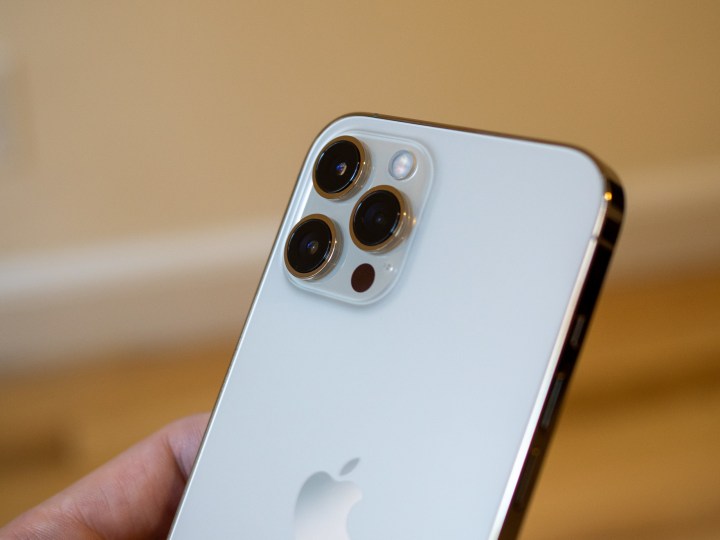
The Z Flip 3 has a dual-camera setup on the rear, with a 12MP wide sensor and a 12MP ultra-wide sensor, and a 10MP selfie camera on the front. The cameras are fine for everyday use, but prone to overprocessing. Samsung has added some new features like Flex Mode, which makes taking hands-free selfies easier, and enhanced Quick Shot, which lets you double-click the power key to snap quick photos and videos without opening the phone.
The iPhone 12 Pro Max’s cameras offer a bit more bang for your buck, and it’s safe to say this is one of the best camera phones around. You get a triple-lens setup on the rear, with a 12MP wide, 12MP ultra-wide, and 12MP telephoto lens. On the front, there’s a 12MP TrueDepth camera for selfies. You can expect crisp, colorful shots even in low-light environments and at night, without even using Night Mode. Portraits and close-up shots also enjoy incredible bokeh. The downside is that the selfie camera can be hit and miss in Night Mode.
Both phones also support up to 4K resolution video recording at 60fps.
This round goes to the iPhone 12 Pro Max, mostly for the fact it takes great shots even in low light.
Winner: iPhone 12 Pro Max
Software and updates

The Z Flip 3 ships with Android 11 and Samsung One UI 3.1, Samsung’s skin. It’s a great OS, but it’s almost impossible to compare it to iOS 14 on the iPhone 12 Pro Max. It’s really a matter of personal preference which is best, as both systems have their pros and cons.
Apple has the edge here with updates. Samsung normally offers three generations of OS updates and four years of security updates, while Apple generally provides several years of updates for its phones, and users receive new versions of software as soon as they’re ready.
We’ve declared the iPhone 12 Pro Max the winner here, mostly due to the longer support for updates — but ultimately it might come down to the age-old “Android or iOS?” question as to which you prefer.
Winner: iPhone 12 Pro Max
Special features
The iPhone 12 Pro Max and the Samsung Galaxy Z Flip 3 both support 5G, and with both phones you get support for mmWave and sub-6Hz 5G, providing the fastest possible 5G speeds.
You can use MagSafe accessories with the iPhone 12 Pro Max, a range of magnetic accessories that attach to the rear of the phone, including the 15W MagSafe wireless charger (not included in the box). However, the iPhone 12 Pro doesn’t have reverse wireless charging so you can’t pop your Airpods Pro or other accessories on the back of your phone to charge, as you can with your Galaxy Buds 2 and the Z Flip 3 — pretty handy when you can’t get to a charger.
Meanwhile, the Z Flip 3 has a cool Labs feature that allows you to optimize apps to the foldable screen. The phone’s cover screen has Samsung Pay built in, making it easy to pay for groceries or a coffee without opening your phone. There’s also a Flex Mode Panel that enhances the usability of apps and makes them look better too. When the Z Flip 3 is partially folded, the panel can help you by, for example, moving your YouTube or Netflix video to the top part of the screen, keeping the controls for volume and playback on the bottom half.
Too close to call this round — the cool foldable features and reverse wireless charging of the Z Flip 3 are excellent, but some might prefer the iPhone 12 Pro Max’s MagSafe accessories.
Winner: Tie
Price and availability
The Galaxy Z Flip 3 is available to buy directly from Samsung. Pick up the 128GB model for $1,000 or the 256GB version for $1,050. It’s available in four colors: Cream, lavender, green, or Phantom Black, as well as three Samsung Exclusives: White, pink, or gray. Right now you get a free pair of Samsung Galaxy Buds 2 with all Z Flip 3 purchases, plus a free year of Samsung Care+ for accidental damage cover — this also includes cracked screen repair for $250. You can save up to $700 off the price when you trade in up to four devices, too.
You can also pick up the Z Flip 3 for free from T-Mobile with an eligible trade-in, or from AT&T.
The Apple iPhone 12 Pro Max is available directly from Apple from $1,099 for the 128GB version, $1,199 for the 256GB version, or $1,399 for the 512GB version. You can also trade in an older phone with Apple and get up to $540 toward the cost of your new phone. Or pick up the iPhone 12 Pro Max from Best Buy and other retailers.
Overall winner: iPhone 12 Pro Max
Apple iPhone 12 Pro Max takes the crown, but only just, as it was really close to call. That impressive, crisp, 6.7-inch OLED screen, outstanding camera, long-lasting battery life, support for 5G, and powerful A14 chip — not to mention several years of updates — ensure it’s earned its rightful place as our winner of the two phones. Ultimately, however, these two phones are both solid choices if you’re looking for a powerful, capable processor, gorgeous screen, and standout design. It may come down to whether you prefer Apple or Android in the end.
